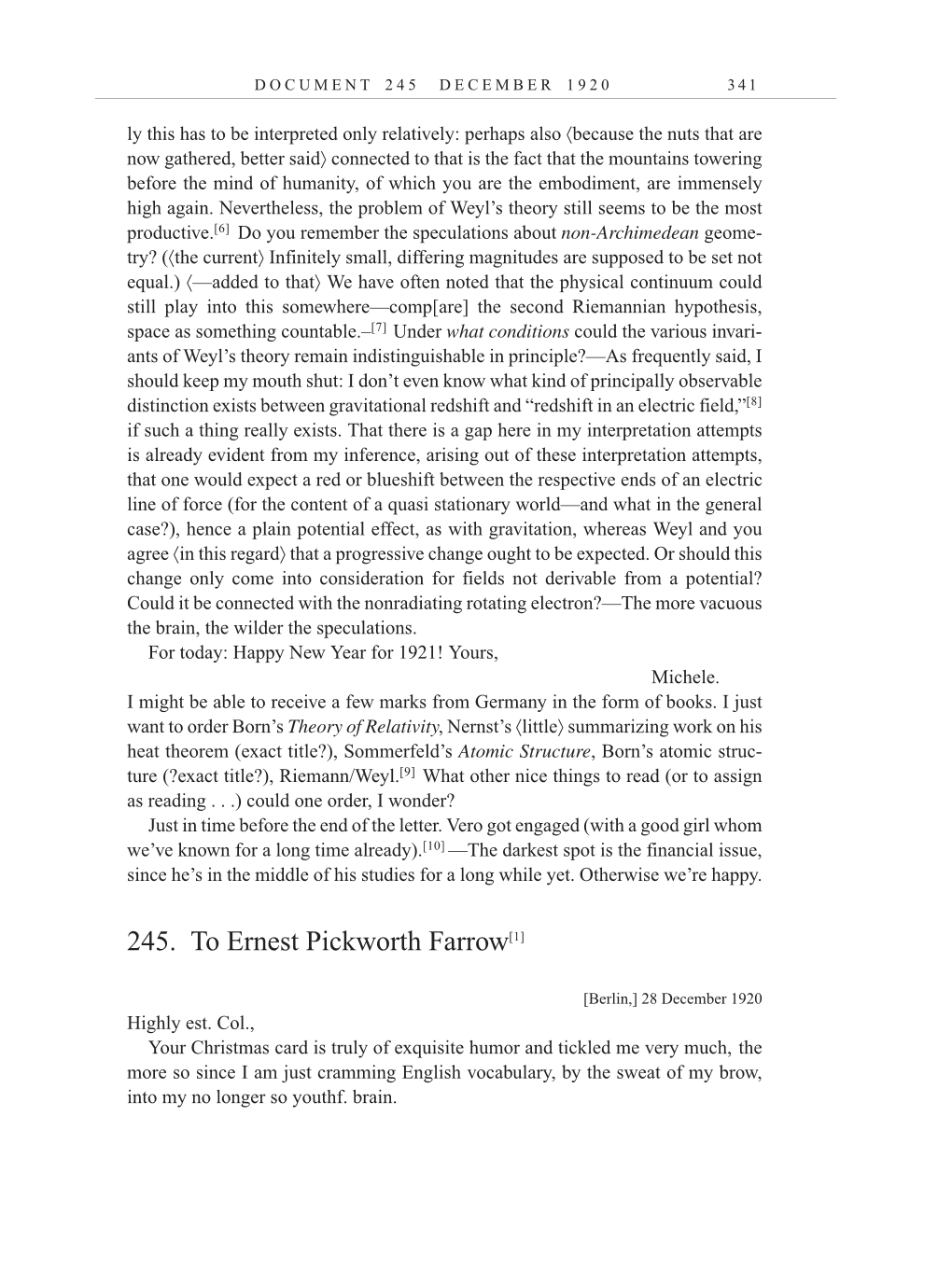D O C U M E N T 2 4 5 D E C E M B E R 1 9 2 0 3 4 1
ly this has to be interpreted only relatively: perhaps also because the nuts that are
now gathered, better said connected to that is the fact that the mountains towering
before the mind of humanity, of which you are the embodiment, are immensely
high again. Nevertheless, the problem of Weyl’s theory still seems to be the most
productive.[6]
Do you remember the speculations about non-Archimedean geome-
try? ( the current Infinitely small, differing magnitudes are supposed to be set not
equal.) —added to that We have often noted that the physical continuum could
still play into this somewhere—comp[are] the second Riemannian hypothesis,
space as something
countable.–[7]
Under what conditions could the various invari-
ants of Weyl’s theory remain indistinguishable in principle?—As frequently said, I
should keep my mouth shut: I don’t even know what kind of principally observable
distinction exists between gravitational redshift and “redshift in an electric
field,”[8]
if such a thing really exists. That there is a gap here in my interpretation attempts
is already evident from my inference, arising out of these interpretation attempts,
that one would expect a red or blueshift between the respective ends of an electric
line of force (for the content of a quasi stationary world—and what in the general
case?), hence a plain potential effect, as with gravitation, whereas Weyl and you
agree in this regard that a progressive change ought to be expected. Or should this
change only come into consideration for fields not derivable from a potential?
Could it be connected with the nonradiating rotating electron?—The more vacuous
the brain, the wilder the speculations.
For today: Happy New Year for 1921! Yours,
Michele.
I might be able to receive a few marks from Germany in the form of books. I just
want to order Born’s Theory of Relativity, Nernst’s little summarizing work on his
heat theorem (exact title?), Sommerfeld’s Atomic Structure, Born’s atomic struc-
ture (?exact title?),
Riemann/Weyl.[9]
What other nice things to read (or to assign
as reading . . .) could one order, I wonder?
Just in time before the end of the letter. Vero got engaged (with a good girl whom
we’ve known for a long time
already).[10]
—The darkest spot is the financial issue,
since he’s in the middle of his studies for a long while yet. Otherwise we’re happy.
245. To Ernest Pickworth Farrow[1]
[Berlin,] 28 December 1920
Highly est. Col.,
Your Christmas card is truly of exquisite humor and tickled me very much, the
more so since I am just cramming English vocabulary, by the sweat of my brow,
into my no longer so youthf. brain.
